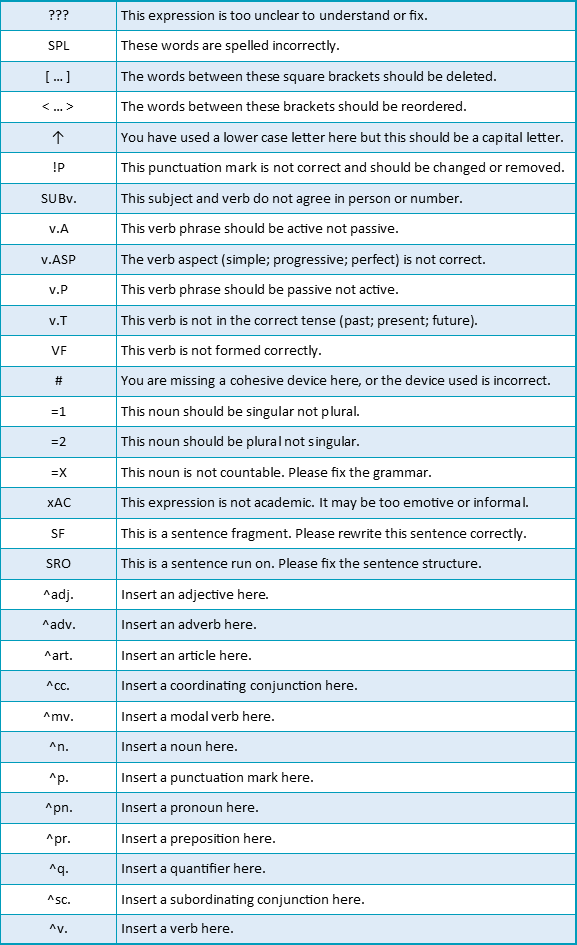What are the 12 tips for proofreading academic work?

This is the fourth and final chapter about Editing and Proofreading. To complete this reader, read each chapter carefully and then unlock and complete our materials to check your understanding.
– Focus specifically on the proofreading process
– Provide twelve pieces of advice for effective proofreading
– Explore how that advice can be best employed by a writer
Chapter 4
This final chapter on editing and proofreading focuses specifically on the skill of proofreading, providing students with the twelve most important pieces of advice for creating a well-proofread academic assignment. Remember that unlike editing, proofreading is the final stage of the writing process, requiring a focus on the technical aspects of writing such as formatting, layout, spelling, grammar and sentence structure. Once you’ve finished reading the following twelve tips, you may then wish to unlock and download our beginner-, intermediate- and advanced-level worksheets to check your understanding of this topic.
1. Edit thoroughly first
Proofreading is the last phase of the writing process and should only be attempted once you’ve finished writing and have fully edited your document. It would be a waste of time to correct typos or grammar mistakes if you’re only going to delete that paragraph or rewrite those sentences anyway. A good academic tutor will provide you with content feedback first for editorial purposes at the body paragraph or plan stage, usually only providing you with technical feedback after you’ve submitted your final draft.
2. Don’t proofread at the last minute
Although proofreading happens last, this doesn’t mean that you shouldn’t still dedicate a considerable amount of time to doing it correctly. Depending on the length of your document, proofreading can take a considerable amount of time and should ideally be done numerous times and over numerous days. Try to complete your assignment at least a week before the final deadline and dedicate that last week to applying careful proofreading processes. You’ll not only feel less stressed by doing so, but you’ll proofread more carefully and thoroughly too.
3. Print your document
One very useful piece of advice is to print out a copy (or two) of your document. For some reason, the human brain has a tendency to ignore the same mistakes time and again, reading what it believes to be written rather than what’s actually there. Printing your document changes the textual display, tricking your brain into believing it’s reading something new. Many authors agree that more errors become noticeable once printed that couldn’t be seen on the computer screen.
4. Read every word carefully
For proofreading to be effective, you’re going to have to read your document very carefully. Because the human brain reads text in short chunks, it’s important that you make an effort to read each word individually to spot technical errors. To do this effectively, you may wish to cover the previous and following words or read aloud to yourself. Doing so should quickly highlight any errors you’ve so far missed.
5. Proofread for one element at a time
While there are many elements that a student can proofread for such as layout, formatting, grammar, punctuation, spelling and typos, one productive method of proofreading is to read the same document multiple times, scanning for a new element with each read. This way your brain will be focussed on one particular error type, minimising distraction and improving proofreading efficacy and efficiency.
6. Use an error-correction code
With Tip 5 in mind, you may wish to apply an error-correction code to your printed document to clarify which errors require fixing. The code that you choose can be highly personalised, using symbols, shorthand notes or a simple error-correction code. We’ve provided one such code on the following page that you may find useful. Perhaps consider using this code next time you proofread your work, identifying every error in your text with a code that signals later improvements:

7. Proofread the layout and formatting first
Probably the easiest aspect of proofreading to start with is regarding the overall layout and formatting of your assignment. Academic institutions usually provide students with guidelines for how to correctly display their work, which may include preferences for font size, style, spacing, headers and footers, line breaks and page numbers. A quick scan of your printed document should highlight whether you’ve been consistent in these areas, and these inconsistencies should be easy to fix.
8. Proofread the grammar and punctuation next
Next, focus on the grammar and punctuation within your text. Are your word forms correct? Do your verbs agree with their subjects? Are your sentences varied, and do they use commas, full stops and colons correctly? Simple grammatical errors will most certainly lose you marks, and more complex errors will greatly impede meaning – limiting comprehension and ultimately weakening your argumentation. Don’t be afraid to consult a number of grammar books (or our grammar practice section), particularly if you’re a non-native speaker of English.
9. Proofread for typos and spelling last
Having fixed your grammar and punctuation errors, you should now be ready to read your document again one last time checking for spelling and simple typos. While a spellchecker will certainly help in this area, such technology cannot be wholly relied upon. Use a dictionary and your own knowledge to consistently proofread your document, being cautious of errors with similar words such as ‘effect’ and ‘affect’ and for consistency with British- and American-English spelling, such as ‘realise’ and ‘realize’. With 99% of assignments being typed nowadays, there’s little excuse for submitting poorly spelled work.
10. Share your work with others
Once you’ve proofread your work to the best of your ability, you may then wish to share your writing with others to see if they can find any errors too. Of course, for the sake of avoiding collusion, never share your work with anyone that’s on the same course as you. Instead, choose a friend, peer or family member and ask them to look specifically for spelling and grammar inconsistencies, ignoring content issues at this stage. And if you don’t have anyone to hand, then there are many services online that you can pay for – including here on Academic Marker.
11. Continue to improve your technical knowledge
How can you correct an error that you don’t know exists? This is particularly problematic for non-native speakers of English who may not yet have the level of proficiency required to submit a fully proofread document. The only advice here is to constantly work to improve your technical knowledge, reading about English grammar and word formation on websites such as Academic Marker with studiousness and frequency.
12. Double check, even when certain
Finally, even if you’re 90% certain that you haven’t made a spelling or grammar error, it’s always important to take the time to double check. Do some research online or in a textbook to see if your assumptions are correct. If it turns out that you haven’t made a mistake, you’ll be even more confident next time, but if it turns out you were wrong, you’ve just saved yourself some valuable marks. Even university professors will double check their knowledge from time to time.
Downloadables
Once you’ve completed all four chapters about editing and proofreading, you might also wish to download our beginner, intermediate and advanced worksheets to test your progress or print for your students. These professional PDF worksheets can be easily accessed for only a few Academic Marks.
Collect Academic Marks
-
100 Marks for joining
-
25 Marks for daily e-learning
-
100-200 for feedback/testimonials
-
100-500 for referring your colleages/friends